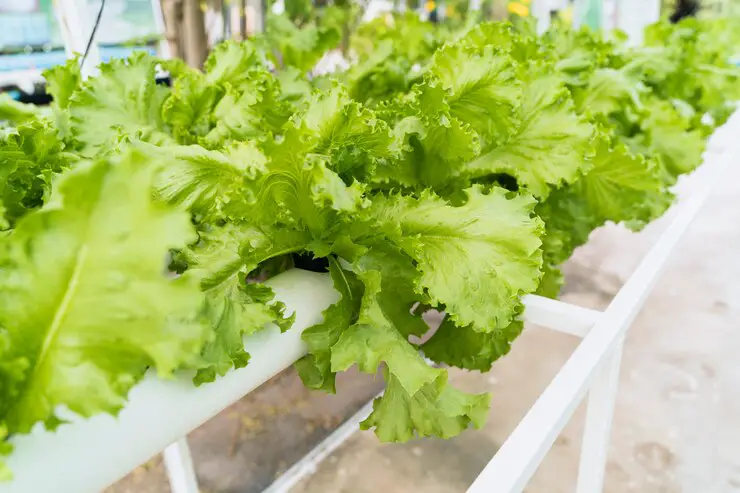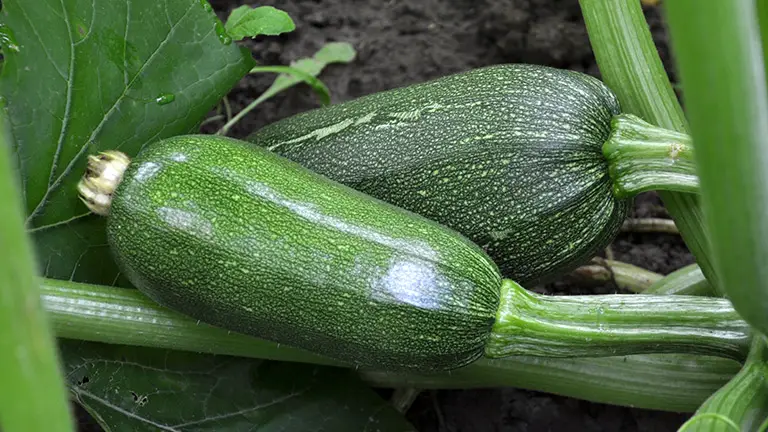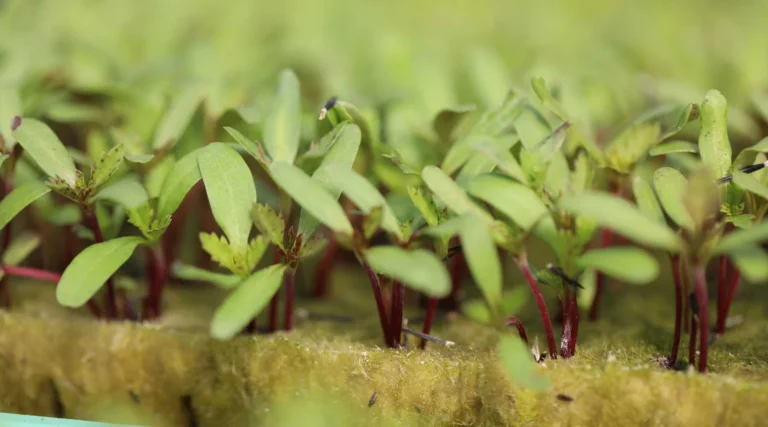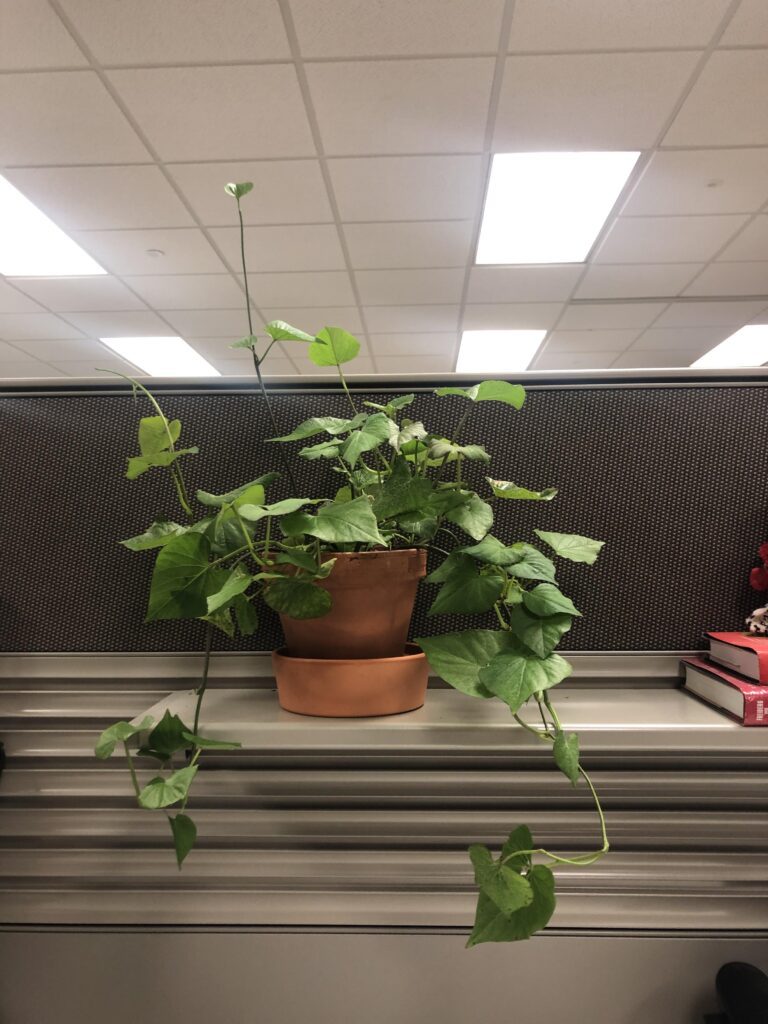Hydroponic Lettuce: How to Grow Crisp and Healthy Lettuce in Water
Welcome to the world of hydroponic lettuce, where you can cultivate crisp, vibrant greens without ever touching soil. Have you ever wondered how it’s possible to grow lush lettuce solely in water? Well, get ready to dive into the fascinating realm of hydroponics, where innovation meets nature in the most unexpected ways. In this guide, we’ll unravel the secrets behind growing lettuce hydroponically, ensuring your harvest is not only bountiful but also bursting with nutrients.
From setting up your hydroponic system to mastering the art of nutrient solutions, we’ve got you covered. Get ready to embark on a journey to grow the freshest, healthiest lettuce right in your own home. Let’s dive in and discover the wonders of hydroponic lettuce together!
Table of Contents
The Benefits of Hydroponic Lettuce Cultivation
Hydroponic lettuce cultivation offers a multitude of benefits for avid gardeners and commercial growers alike.

- Hydroponic lettuce grows in a nutrient-rich water solution, eliminating the need for soil and reducing the risk of soil-borne diseases.
- This method eliminates the labor-intensive tasks of soil preparation and weeding, offering a more efficient gardening solution.
- Gardeners have precise control over growing conditions like light, temperature, and nutrients, ensuring ooptimal growth and health of their lettuce crops.
- Hydroponic cultivation provides a year-round supply of fresh, high-quality lettuce, regardless of the season or location.
- Growers can achieve accelerated growth rates and consistent yields due to controlled environmental factors.
- Continuous harvesting is possible with hydroponics, ensuring a steady supply of nutritious lettuce throughout the year.
- Hydroponic farming requires significantly less water compared to traditional soil-based methods, contributing to environmental sustainability amidst water scarcity concerns.
Choosing the Right Lettuce Variety for Hydroponic Cultivation
Choosing the right lettuce variety is crucial for successful hydroponic cultivation. With numerous options available, selecting the appropriate variety ensures optimal growth, yield, and quality. Factors such as taste, texture, color, and disease resistance should be considered when making this decision.
| Lettuce Variety | Advantages | Disadvantages | Characteristics |
|---|---|---|---|
| Butterhead (Bibb) | – Velvety texture and buttery taste | – Sensitive to heat and bolting | – Forms loose heads with tender leaves |
| Oak Leaf | – Sweet, nutty flavor and soft texture | – Slightly shorter shelf life | – Attractive red and green varieties |
| Romaine | – Versatile and resistant to contaminants | – Longer growth cycle | – Crisp, elongated leaves |
| Grand Rapids | – Thrives in lower light conditions | – May develop brown leaf edges | – Fast-growing and tender leaves |
When choosing a lettuce variety for hydroponic cultivation, it is essential to consider personal preferences, market demand, and specific growing conditions. Conducting thorough research and consulting with experienced hydroponic growers can provide valuable insights into selecting the most suitable lettuce variety for your cultivation goals.
Creating the Ideal Hydroponic Growing Environment
Hydroponic lettuce cultivation requires a carefully controlled growing environment to maximize growth and ensure healthy plants.
:max_bytes(150000):strip_icc()/GettyImages-1261658312-c836ec7fe0f041329b88b76fb62be97b.jpg)
- Temperature and Humidity:
- Lettuce thrives in temperatures between 60-70°F (15-21°C).
- Maintain humidity levels around 40-60%.
- High temperatures can cause bolting and bitterness, while low humidity leads to water loss and wilting.
- Ventilation and Cooling:
- Invest in proper ventilation and cooling systems.
- Prevent stale air and excess moisture buildup.
- Ensure optimal conditions for lettuce growth.
- Air Circulation:
- Provide adequate air circulation within the growing area.
- Install fans or air pumps strategically.
- Continuous oxygen exchange supports root health and nutrient absorption.
- Plant Spacing:
- Position lettuce plants at a sufficient distance to avoid overcrowding.
- Allow air to circulate freely around each plant.
By following these guidelines, you’ll create an environment conducive to healthy hydroponic lettuce growth! 🌱
Selecting the Proper Nutrient Solution for Hydroponic Lettuce
When it comes to hydroponic lettuce cultivation, selecting the proper nutrient solution is essential for optimal growth and development of the plants. The nutrient solution serves as the primary source of essential elements needed by the lettuce plants to thrive in a soil-less environment.
- Select a nutrient solution with a balanced range of essential macronutrients and micronutrients for optimal lettuce growth.
- Macronutrients like nitrogen, phosphorus, and potassium are needed in larger quantities and are crucial for overall plant growth, development, and yield.
- Ensure the nutrient solution includes micronutrients such as iron, manganese, and zinc, even though they are required in smaller amounts.
- Micronutrients play vital roles in various metabolic functions of lettuce plants and are essential for maintaining their health.
- Choose a nutrient solution that provides all necessary elements in appropriate proportions to support healthy lettuce growth and development.
| Selecting the Proper Nutrient Solution for Hydroponic Lettuce | Key Considerations |
|---|---|
| 1. Essential Macronutrients | – Nitrogen (N), Phosphorus (P), Potassium (K): Ensure a balanced ratio of these macronutrients for overall plant growth. |
| – Calcium (Ca) and Magnesium (Mg): Essential for preventing nutrient deficiencies and promoting leafy greens. | |
| 2. Micronutrients | – Iron (Fe), Manganese (Mn), Zinc (Zn), Copper (Cu), Boron (B), Molybdenum (Mo): Include these micronutrients for proper enzyme function. |
| – Chelated Forms: Opt for chelated micronutrients for enhanced availability and uptake by plants. | |
| 3. Balanced NPK Ratios | – Vegetative Growth (High Nitrogen): During the vegetative phase, a higher nitrogen ratio is beneficial for leaf development. |
| – Flowering and Fruit Formation (Balanced NPK): Transition to a balanced ratio during flowering for overall plant health. | |
| 4. pH Level and Buffering Capacity | – Optimal pH Range: Maintain pH between 5.5 and 6.5 for optimal nutrient availability. |
| – Buffering Agents: Consider nutrient solutions with buffering agents to stabilize pH levels. | |
| 5. Electrical Conductivity (EC) or Total Dissolved Solids (TDS) | – Monitor EC/TDS Levels: Regularly measure and adjust nutrient concentrations to meet lettuce requirements. |
| – EC/TDS Meters: Use meters to ensure the nutrient solution is within the recommended range. | |
| 6. Pre-formulated Hydroponic Nutrient Solutions | – Commercial Products: Consider pre-formulated nutrient solutions designed specifically for hydroponic lettuce. |
| – Ease of Use: Simplifies nutrient management for beginners and ensures a balanced nutrient profile. | |
| 7. Water Quality | – Purity: Use clean and well-filtered water to prevent contamination and ensure nutrient solution purity. |
| – Mineral Content: Be aware of the mineral content in the water source to adjust nutrient concentrations accordingly. |
- Choose a nutrient solution that is easily absorbed by the plants’ root system and readily available for uptake.
- Ensure the solution has a balanced pH level suitable for lettuce cultivation, typically ranging from 5.5 to 6.5.
- The pH level of the nutrient solution influences the availability of nutrients for absorption by the roots.
- Regularly monitor and adjust the pH level to maintain optimal nutrient uptake and prevent nutrient deficiencies or toxicities.
- Proper pH management is essential for maximizing the growth and health of hydroponic lettuce crops.
Using the AeroGarden Liquid Nutrients for my hydroponic lettuce has been a game changer. Since incorporating this nutrient solution, my lettuce has shown remarkable growth, with lush, vibrant leaves and rapid development. The solution is straightforward to use—just measure and add to the water. My lettuce plants are healthier and more robust than ever before. The improvement in yield and quality is noticeable, making this product an essential part of my hydroponic gardening routine. Highly recommended for anyone growing hydroponic lettuce.
- Easy to Use: The AeroGarden Liquid Nutrients are simple to measure and apply, making them convenient for both beginners and experienced gardeners.
- Balanced Formula: It provides a well-balanced mix of essential nutrients, promoting healthy plant growth.
- Versatile: Suitable for various hydroponic systems and can be used for different types of plants, including herbs, vegetables, and flowers.
- Long-Lasting: A 1-liter bottle lasts a considerable amount of time, offering good value for the price.
- Cost: It is relatively more expensive compared to some other nutrient solutions on the market.
- Specific to AeroGarden: While it can be used in other hydroponic systems, it is specifically designed for AeroGarden setups, which may not be ideal for all users.
- Availability: Depending on the region, it might be harder to find in local stores and may require online ordering.
Starting Hydroponic Lettuce Seeds or Seedlings
Starting hydroponic lettuce seeds or seedlings is an essential step in the cultivation process that sets the foundation for a successful harvest. Whether you’re a beginner or an experienced hydroponic gardener, following the right techniques can increase your chances of achieving optimal results.
- Seed Selection: Obtain high-quality lettuce seeds or healthy seedlings from a reputable source. Varieties like Butterhead, Romaine, and Leaf lettuce are well-suited for hydroponics.
- Hydroponic System: Choose a hydroponic system that suits your space and budget. Common options include deep water culture, nutrient film technique (NFT), drip systems, and wick systems. Each has its advantages and considerations.
- Growing Medium: Although hydroponic lettuce doesn’t require soil, it does need a growing medium to support the plants. Options include rockwool cubes, perlite, coconut coir, or other inert media that allow for good root aeration. Clay pebbles are a popular choice.
- Nutrient Solution: Use a hydroponic nutrient solution specifically formulated for lettuce or leafy greens. These solutions contain essential macro and micronutrients. Follow the manufacturer’s instructions for mixing and replenishing the solution.
- pH and EC Monitoring: Invest in a pH meter and an electrical conductivity (EC) meter. Lettuce grows best in a pH range of 5.5 to 6.5. Regularly measure and adjust your solution using these tools.
By following these steps, you can establish a strong foundation for successful hydroponic lettuce cultivation. However, it is crucial to pay attention to specific requirements and potential challenges that may arise during the seed or seedling stage to promote healthy growth and maximize productivity.
I recently used the 500 Buttercrunch Lettuce Seeds for my hydroponic lettuce setup, and I must say, I was impressed with the results. The seeds sprouted quickly and developed into healthy, vibrant seedlings within a few weeks. The Buttercrunch variety provided a deliciously sweet flavor and tender texture, perfect for adding to salads and sandwiches. While the packaging could have been improved for better seed preservation, the overall germination rate was excellent, with the majority of seeds yielding strong plants.
Although the price point may be slightly higher than some alternatives, the quantity of seeds offered ensures a plentiful harvest, making it a worthwhile investment for anyone looking to grow their own hydroponic lettuce at home.
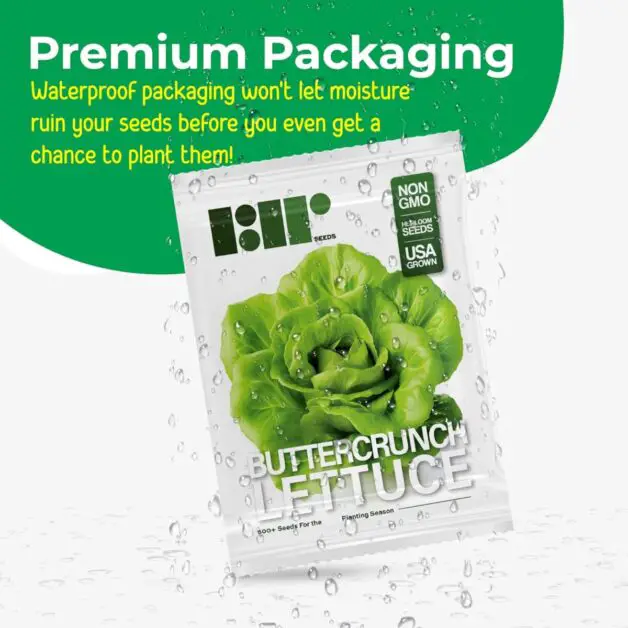
✅ Butterhead variety: Buttercrunch lettuce is known for its tender leaves and sweet flavor, making it a popular choice for salads and sandwiches.
✅ Reliable germination: Customers report excellent germination rates, with the majority of seeds sprouting quickly and producing healthy seedlings.
✅ Versatile growing options: These seeds can be sown directly in the garden or used for hydroponic cultivation, providing flexibility for different growing environments.
❌ Variable results: While most customers experienced successful germination, a few reported lower-than-expected seed viability or inconsistent results.
❌ Price point: While the quantity of seeds is generous, the price may be relatively high compared to other seed options on the market.
❌ Limited variety: This product specifically offers Buttercrunch lettuce seeds, so customers seeking a wider variety of lettuce types may need to purchase additional seed packets.
Transplanting Hydroponic Lettuce Seedlings into the Growing System
Transplanting hydroponic lettuce seedlings into the growing system is a crucial step in ensuring the success of your cultivation. After germinating your lettuce seeds or purchasing seedlings, you’ll need to carefully transfer them into the hydroponic setup. This process allows the young plants to establish their roots in the nutrient-rich solution and thrive in the controlled environment.

- Before transplanting, ensure the hydroponic system is properly set up and functioning optimally.
- Check the pH levels of the water, aiming for the ideal range of 5.5 to 6.5, and adjust using pH-balancing solutions if needed.
- Ensure the nutrient solution is well-mixed and contains the necessary balance of macronutrients and micronutrients.
- Gently remove seedlings from their starter trays or growing medium, being careful not to damage their roots.
- Place each seedling into a net pot or grow cup filled with hydroponic growing medium, ensuring roots are fully covered and in direct contact with the nutrient solution.
- Monitor seedlings closely after transplanting, maintaining adequate lighting, air circulation, and temperature within the hydroponic system.
- Regularly check nutrient levels and adjust as necessary to prevent deficiencies or excesses that could hinder plant growth.
Transplanting hydroponic lettuce seedlings into the growing system requires precision and attention to detail. By following these steps and providing the proper care, you set your lettuce on the path to flourishing and becoming a bountiful crop of nutritious greens.
Maintaining Proper Water pH Levels for Hydroponic Lettuce
Maintaining proper water pH levels is crucial for the successful cultivation of hydroponic lettuce. The ideal pH range for hydroponic lettuce is typically between 5.5 and 6.5, as this provides an optimal environment for nutrient uptake and overall plant growth.
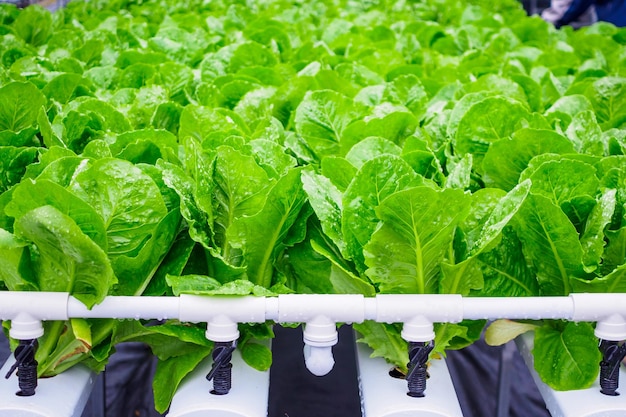
- Regular Testing: Use a pH meter or test kit to monitor water pH regularly. This helps you detect any fluctuations and take corrective actions promptly.
- Adjustments for High pH (Above 6.5):
- If the pH is too high, add a pH down solution (e.g., phosphoric acid) gradually.
- Retest the water after each adjustment until the desired pH range (5.5 to 6.5) is achieved.
- Adjustments for Low pH (Below 5.5):
- If the pH is too low, add a pH up solution (e.g., potassium hydroxide) gradually.
- Again, retest the water to ensure it falls within the optimal pH range.
- Importance of Stable pH:
- Proper pH ensures nutrients availability and absorption.
- Imbalanced pH can lead to nutrient deficiencies and hinder plant growth.
- Microbial activity in the root zone is affected by pH, impacting overall plant health.
By consistently monitoring and adjusting the water pH, you can provide your hydroponic lettuce with the optimal conditions for nutrient uptake and overall vitality.
Monitoring and Adjusting Nutrient Levels in the Hydroponic System
Monitoring and adjusting nutrient levels in a hydroponic system is crucial for ensuring the health and growth of your lettuce plants. The nutrient solution is the lifeblood of your plants, providing them with the essential elements they need to thrive. Regularly monitoring the nutrient levels will help you maintain the optimum balance and prevent any deficiencies or toxicities.
- Visual Observations:
- Regularly inspect your plants for signs of nutrient deficiencies (e.g., yellowing leaves, stunted growth).
- Keep detailed records to track any patterns over time.
- Testing Tools:
- Use pH meters to measure acidity or alkalinity in the nutrient solution.
- Utilize electrical conductivity (EC) meters to assess dissolved salt concentration.
- Regular testing helps you make precise adjustments.
- pH Range:
- Aim for a pH range of 5.5 to 6.5 for optimal nutrient absorption.
- Gradually adjust pH using pH up or down solutions as needed.
- EC Levels:
- Maintain appropriate EC levels based on your lettuce variety.
- Adjust nutrient solution concentrations accordingly.
- Nutrient Solution Composition:
- Nutrients are supplied to lettuce plants in hydroponics by maintaining a target electrical conductivity (EC) in the fertilizer solution.
- A fertilizer contains several elements, including nitrogen (N), phosphorus (P), potassium (K), calcium (Ca), magnesium (Mg), sulfur (S), and micronutrients like iron (Fe), zinc (Zn), molybdenum (Mo), manganese (Mn), boron (B), and copper (Cu).
- N, P, K, and Mn are rapidly taken up by plants, while Ca and B are absorbed slowly. Other elements have intermediate uptake rates.
- Accumulated elements like Ca, Mg, and S can affect EC values and lettuce growth if not managed properly.
- Optimal Fertilizer Concentration:
- The composition of elements inside a healthy plant serves as a starting point.
- Optimal fertilizer concentration should result in the desired composition of elements within the plants.
- For healthy lettuce growth, the composition of elements per 1 gram of dry leaves should be approximately:
- N: 4.5%
- P: 0.5%
- K: 5%
- Ca: 0.5%
- Mg: 0.3%
- S: 0.3%
- Fe: 0.0015%
- Zn: 0.0005%
- Mn: 0.0005%
- B: 0.0003%
- Cu: 0.0002%.
- Water Use and Nutrient Removal:
- Lettuce plants use approximately 300 liters of water for every 1 kg (2.2 lb) of dry weight produced.
- Adjust the nutrient solution volume based on plant growth and water use.
- Monitor plant growth and adjust nutrient levels accordingly.
- Recommended Nutrient Solutions:
- Consider using commercial hydroponic nutrient solutions designed for lettuce. Some popular options include:
- General Hydroponics Flora Series
- Cal Mag Plant Supplement
- Masterblend 4-18-38 Complete Combo Kit
- TPS Nutrients BASE AB SET
- Photosynthesis Plus
- FoxFarm Trio
- Fox Farm Liquid Nutrient Trio Formula
- General Hydroponics MaxiGro Plant Food
- Green Planet Nutrients REZIN.
- Consider using commercial hydroponic nutrient solutions designed for lettuce. Some popular options include:
Remember to regularly monitor your lettuce plants, observe their growth, and adjust nutrient levels as needed. Consulting nutrient solution charts and seeking expert advice will help you fine-tune your hydroponic system for optimal results!
By consistently monitoring and adjusting the nutrient levels in your hydroponic system, you will provide your lettuce plants with the optimal conditions for growth and development. This attention to detail will result in healthier, more vibrant lettuces that are packed with flavor and nutrients.
Providing Adequate Lighting for Hydroponic Lettuce Growth
Adequate lighting is crucial for the successful growth of hydroponic lettuce. Since lettuce is a leafy vegetable, it requires a sufficient amount of light to carry out photosynthesis effectively. When it comes to lighting options for hydroponic lettuce, there are several choices available. However, the two most commonly used are fluorescent lights and LED lights.

- Fluorescent lights are a cost-effective and readily available option for hydroponic lettuce cultivation.
- They emit a wide spectrum of light suitable for lettuce growth, with a recommended color temperature of 6500 Kelvin, similar to natural daylight.
- Position fluorescent lights 6 to 12 inches above lettuce plants to provide optimal lighting conditions.
- LED lights are gaining popularity in hydroponics due to their energy efficiency and long lifespan.
- LED lights offer customization options, with various colors available to meet specific plant light requirements.
- For lettuce growth, use LED lights with a spectrum including blue and red light, crucial for chlorophyll absorption.
- Position LED lights 12 to 18 inches above lettuce plants for uniform light distribution and optimal growth.
In conclusion, providing adequate lighting is essential for promoting healthy growth in hydroponic lettuce. Whether you choose fluorescent lights or LED lights, ensuring the proper spectrum and positioning will allow your lettuce plants to thrive and produce high-quality yields.
Proper Air Circulation and Ventilation in Hydroponic Lettuce Systems
Proper air circulation and ventilation are essential aspects of maintaining a healthy and thriving hydroponic lettuce system. Adequate airflow helps to regulate temperature, humidity, and carbon dioxide levels, ensuring optimal conditions for plant growth. Without proper ventilation, stagnant air can lead to increased moisture levels and the buildup of harmful pathogens, ultimately affecting the overall health and yield of lettuce plants.
- Use fans strategically placed within the hydroponic lettuce system to promote air circulation.
- Fans create a gentle breeze that facilitates the exchange of air, preventing the formation of hot spots and stagnant pockets.
- Air movement ensures fresh air reaches all parts of the plants, strengthening stems and leaves and reducing the risk of diseases caused by damp conditions.
- Design the hydroponic system to allow for proper air circulation, avoiding obstacles that block airflow such as walls or excess plant foliage.
- Provide adequate space between plants and ensure airflow between trays or containers to maintain optimal air circulation.
- Regularly monitor humidity levels and use dehumidifiers if necessary to control excessive moisture and prevent mold or mildew development.
By prioritizing proper air circulation and ventilation, hydroponic lettuce growers can create an environment that promotes healthy plant growth and reduces the risk of diseases. Implementing these practices will ultimately contribute to higher yields and better-quality lettuce crops.
Preventing and Managing Common Pests and Diseases in Hydroponic Lettuce
One of the key challenges in hydroponic lettuce cultivation is the prevention and management of common pests and diseases. While hydroponic systems are generally less susceptible to pests than traditional soil-based methods, they are not completely immune. Pests such as aphids, whiteflies, and spider mites can still find their way into hydroponic lettuce systems and wreak havoc on the plants. Conversely, diseases like powdery mildew and root rot can also occur and compromise the health and productivity of hydroponic lettuce crops.
| Preventing and Managing Pests and Diseases in Hydroponic Lettuce | Key Strategies |
|---|---|
| 1. Strict Hygiene Practices | – Clean Environment: Maintain a clean and sterile hydroponic system to minimize disease spread and pest infestations. |
| – Tool Sterilization: Sterilize tools, containers, and equipment regularly to prevent cross-contamination. | |
| 2. Integrated Pest Management (IPM) | – Beneficial Insects: Introduce predatory insects like ladybugs or beneficial nematodes to control pest populations. |
| – Companion Planting: Planting pest-repelling herbs or flowers alongside lettuce can deter pests. | |
| 3. Quarantine New Plants | – Isolation: Isolate new plants for a brief period to monitor for signs of pests or diseases before introducing them to the main system. |
| – Early Detection: Helps prevent the introduction of potential issues to the entire hydroponic system. | |
| 4. Regular Monitoring | – Visual Inspection: Regularly inspect plants for signs of pests (such as aphids or spider mites) or diseases (like powdery mildew). |
| – System Checks: Monitor the hydroponic system for clogs, leaks, or other issues that may contribute to disease development. | |
| 5. Maintain Optimal Environmental Conditions | – Temperature and Humidity: Control environmental conditions within the optimal range to discourage pest and disease development. |
| – Adequate Air Circulation: Ensure good air circulation to prevent conditions conducive to fungal diseases. | |
| 6. Use Disease-Resistant Varieties | – Select Resistant Cultivars: Choose lettuce varieties that are known to be resistant to common diseases prevalent in hydroponic systems. |
| – Genetic Resistance: Utilize plant genetics to enhance the plant’s ability to resist certain pests and diseases. | |
| 7. Neem Oil and Natural Remedies | – Neem Oil: Apply neem oil as a natural insecticide to deter pests and prevent their reproduction. |
| – Garlic and Chili Solutions: Mixtures of garlic or chili can be used as natural repellents against pests. | |
| 8. Isolate and Treat Affected Plants Promptly | – Remove Infected Plants: If a plant shows signs of disease, promptly remove it from the system to prevent further spread. |
| – Treatment: Apply appropriate organic or hydroponic-approved treatments for identified diseases. |
Additionally, the use of disease-resistant lettuce varieties can be an effective preventive measure. If a disease outbreak does occur, swift action is necessary to remove and destroy infected plants to prevent the spread of the disease to healthy plants. By implementing strict hygiene practices and proactive disease management strategies, hydroponic lettuce growers can minimize the impact of pests and diseases and ensure the health and productivity of their crops.
Harvesting and Storing Hydroponic Lettuce
Harvesting and storing hydroponic lettuce is a crucial step in ensuring the quality and freshness of your crop. When it comes to harvesting, timing is key. Lettuce should be harvested when the leaves are at their optimal size and before they start to show signs of bolting or yellowing. This timing varies depending on the lettuce variety and growing conditions, so it’s important to closely monitor your plants.
- Harvest hydroponic lettuce by gently cutting leaves near the base of the plant with a sharp knife or scissors.
- Begin by harvesting outer leaves, allowing inner leaves to continue growing for a continuous harvest and sustained plant productivity.
- Handle harvested lettuce with care to avoid bruising or damage.
- Wash harvested leaves thoroughly in cold water to remove dirt and debris, then pat dry to remove excess moisture.
- Store cleaned lettuce in a clean, airtight container or plastic bag in the refrigerator.
- Maintain a temperature between 32 to 40 degrees Fahrenheit (0 to 4 degrees Celsius) for optimal lettuce storage.
- Avoid storing lettuce at colder temperatures, which may cause wilting, or warmer temperatures, which may accelerate decay.
By following these steps, you can enjoy the crispness and flavor of your hydroponic lettuce for an extended period.
Tips for Maximizing Yield and Quality in Hydroponic Lettuce Cultivation
To maximize yield and quality in hydroponic lettuce cultivation, it is essential to pay attention to several key factors.
- Nutrient Levels:
- Regular Monitoring: Regularly check the nutrient solution in your hydroponic system. Use an electrical conductivity (EC) meter to measure the solution’s strength.
- Balanced Solution: Maintain a balanced nutrient solution with the necessary macronutrients (N, P, K) and micronutrients (Ca, Mg, S, Fe, Zn, Mn, B, Cu).
- Adjustments: Make adjustments based on plant growth stage, water uptake, and nutrient consumption.
- Testing: Periodically test the solution to ensure optimal nutrient levels.
- Lighting:
- Artificial Light: Hydroponic systems lack natural sunlight, so artificial lighting is essential.
- LED Grow Lights: LED grow lights are energy-efficient and customizable.
- Spectrum: Choose lights with a spectrum suitable for lettuce growth (blue and red wavelengths).
- Intensity and Duration: Provide adequate light intensity and duration (usually 12-16 hours per day).
- Positioning: Properly position lights to ensure even coverage and prevent shading/stretching.
Remember, maintaining the right nutrient levels and providing optimal lighting are critical for healthy lettuce growth and maximizing yield! 🌱🌿💡
Watch more in the given video:
FAQ
What are the benefits of hydroponic lettuce cultivation?
Hydroponic lettuce cultivation offers several benefits, such as higher yield potential, faster growth rates, reduced water usage, and the ability to control nutrient levels for optimal plant growth.
How do I choose the right lettuce variety for hydroponic cultivation?
When selecting lettuce varieties for hydroponic cultivation, consider factors such as growth rate, disease resistance, and suitability for indoor growing conditions. Popular options include Bibb, Butterhead, and Romaine lettuce varieties
What is the ideal hydroponic growing environment for lettuce?
The ideal hydroponic growing environment for lettuce includes a temperature range of 55-75°F (13-24°C), relative humidity around 50-70%, and a well-ventilated space with adequate lighting.
How do I select the proper nutrient solution for hydroponic lettuce?
When selecting a nutrient solution for hydroponic lettuce, look for a balanced formula specifically designed for leafy greens. It should contain the necessary macro and micronutrients required for healthy plant growth.
How do I start hydroponic lettuce seeds or seedlings?
To start hydroponic lettuce seeds, place them in a growing medium such as rockwool cubes or oasis cubes. Keep them moist and provide adequate lighting until they germinate. Alternatively, you can purchase hydroponic lettuce seedlings to transplant into your system.
How do I maintain proper water pH levels for hydroponic lettuce?
Regularly monitor the water pH in your hydroponic system using a pH meter or test strips. Adjust the pH as needed using pH-up or pH-down solutions to keep it within the optimal range of 5.5-6.5 for lettuce.
How do I monitor and adjust nutrient levels in my hydroponic system?
Regularly monitor the nutrient levels in your hydroponic system using an electrical conductivity (EC) meter. Adjust the nutrient solution strength by adding more or less concentrated nutrient solution to maintain the desired EC levels for lettuce.
How important is providing adequate lighting for hydroponic lettuce growth?
Providing adequate lighting is crucial for hydroponic lettuce growth. Use high-quality LED grow lights or fluorescent lights to ensure the plants receive the necessary amount and spectrum of light for photosynthesis.
Why is proper air circulation and ventilation important in hydroponic lettuce systems?
Proper air circulation and ventilation help prevent the buildup of humidity and stagnant air, reducing the risk of diseases such as mold and mildew. It also ensures the plants receive a fresh supply of carbon dioxide for optimal growth.
How can I prevent and manage common pests and diseases in hydroponic lettuce?
Implement preventive measures such as maintaining a clean growing environment, regularly inspecting plants for pests, and using biological controls like beneficial insects or organic pest control methods. If diseases occur, treat them promptly with appropriate fungicides or bactericides.
How do I harvest and store hydroponic lettuce?
Harvest hydroponic lettuce by cutting the outer leaves or the entire head, depending on the variety. Store the harvested lettuce in a sealed container or bag in the refrigerator to maintain freshness and quality.
What are some tips for maximizing yield and quality in hydroponic lettuce cultivation?
Some tips for maximizing yield and quality include optimizing lighting and nutrient levels, practicing proper plant spacing, maintaining optimal pH and EC levels, and implementing regular maintenance and monitoring routines for the hydroponic system.

Studied Agricultural Engineering-Plant Protection at University of California, Davis.
Head of Content writing team at Southelmontehydroponics.com

